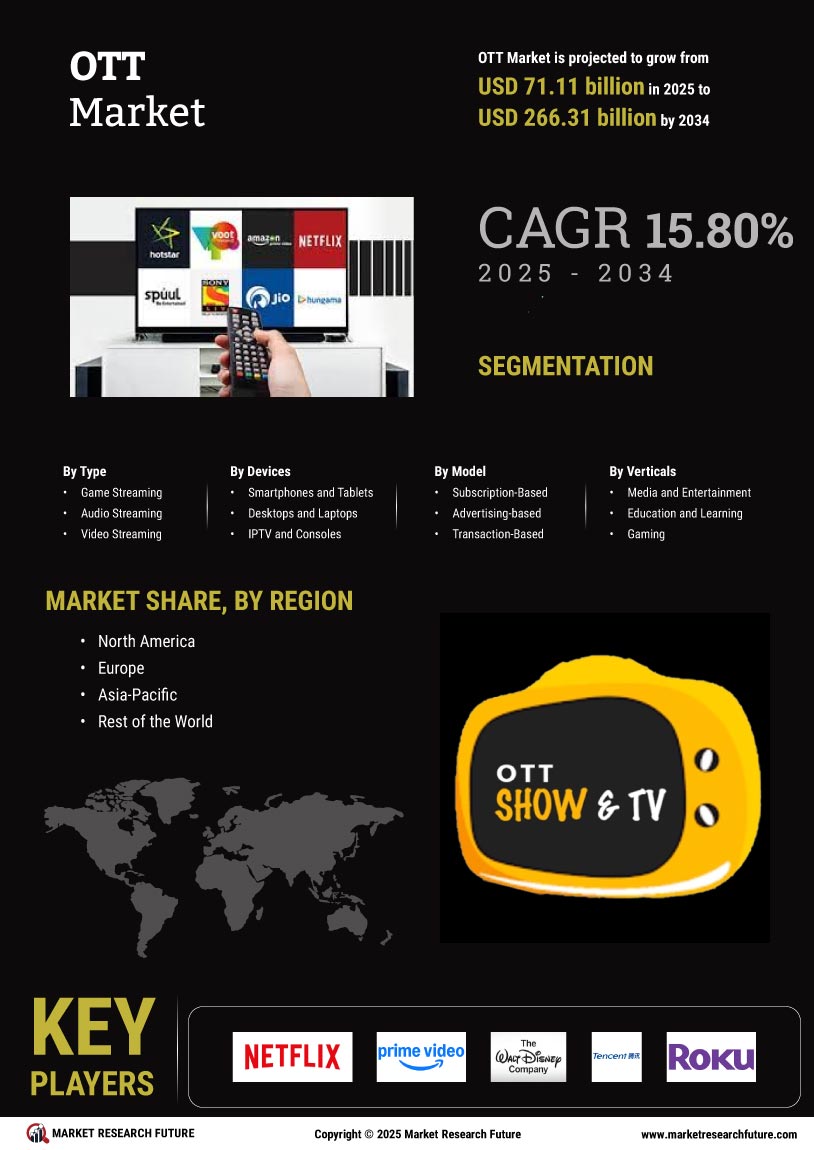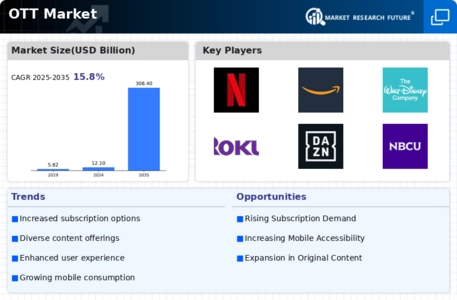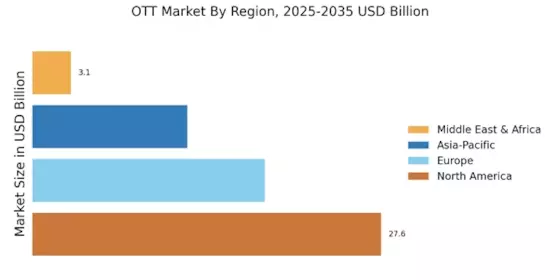Diverse Content Offerings
The availability of diverse content offerings is a significant driver for the OTT Market. Streaming platforms are increasingly investing in a wide array of genres, catering to various demographics and preferences. This trend is evident as OTT Market services expand their libraries to include not only movies and series but also documentaries, live sports, and niche content. Recent data suggests that platforms with extensive content libraries are more likely to attract and retain subscribers. Furthermore, the production of original content has become a focal point for many OTT Market providers, enhancing their competitive edge. As a result, the OTT Market is thriving, as consumers are drawn to platforms that offer unique and varied content tailored to their interests.
Competitive Pricing Models
Competitive pricing models are emerging as a vital driver for the OTT Market. As the number of streaming services increases, providers are adopting various pricing strategies to attract and retain subscribers. Subscription-based models, ad-supported tiers, and pay-per-view options are becoming more prevalent, allowing consumers to choose plans that best fit their viewing habits and budgets. Recent data indicates that platforms offering flexible pricing options tend to experience higher subscriber growth. This trend suggests that the OTT Market is becoming increasingly competitive, with providers striving to differentiate themselves through pricing and value-added services. As a result, consumers benefit from a wider range of choices, while OTT Market platforms continue to innovate in their offerings.
Shift in Consumer Behavior
The evolving consumer behavior is another critical driver influencing the OTT Market. Viewers are increasingly favoring on-demand content over traditional television, leading to a decline in cable subscriptions. Recent statistics indicate that nearly 30% of households have cut the cord, opting instead for OTT Market services that offer greater flexibility and a diverse range of content. This shift is driven by the desire for personalized viewing experiences, as consumers seek content that aligns with their preferences. As a result, OTT Market platforms are adapting their strategies to cater to these changing demands, enhancing their libraries and investing in original programming. The OTT Market is thus experiencing a transformation, as it capitalizes on the changing landscape of media consumption.
Technological Advancements
Technological advancements play a crucial role in shaping the OTT Market. Innovations in streaming technology, such as improved compression algorithms and adaptive bitrate streaming, enhance the viewing experience by providing high-quality content with minimal buffering. Additionally, the proliferation of smart devices has made it easier for consumers to access OTT Market services anytime and anywhere. Recent reports indicate that the use of smart TVs and mobile devices for streaming has increased significantly, further driving the demand for OTT Market content. As technology continues to evolve, OTT Market providers are likely to leverage these advancements to improve user experience and expand their reach. The OTT Market is thus positioned to benefit from ongoing technological developments that enhance content delivery and accessibility.
Increased Internet Penetration
The rise in internet penetration is a pivotal driver for the OTT Market. As more individuals gain access to high-speed internet, the potential audience for OTT Market services expands significantly. According to recent data, internet penetration rates have reached approximately 60% in many regions, facilitating the growth of streaming platforms. This increased connectivity allows consumers to access content on various devices, including smartphones, tablets, and smart TVs. Consequently, OTT Market service providers are likely to see a surge in subscriptions and viewership, as more users are able to engage with their offerings. The OTT Market is thus positioned to benefit from this trend, as it aligns with the growing demand for on-demand content and flexible viewing options.


















Leave a Comment